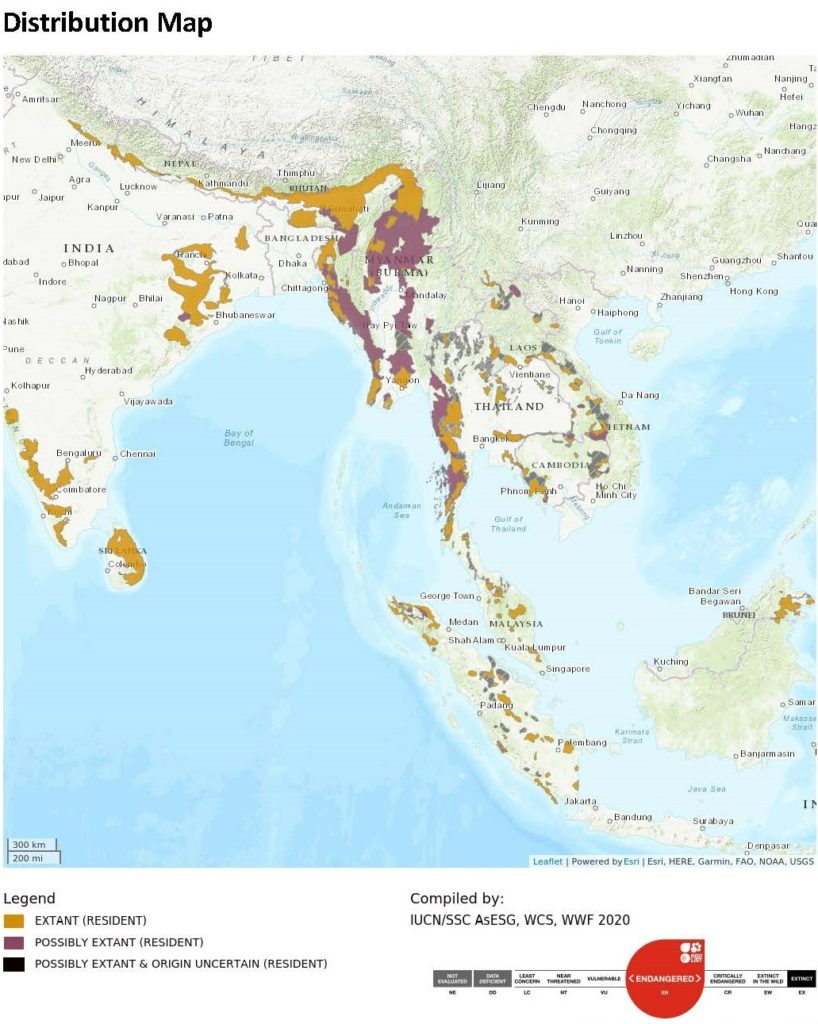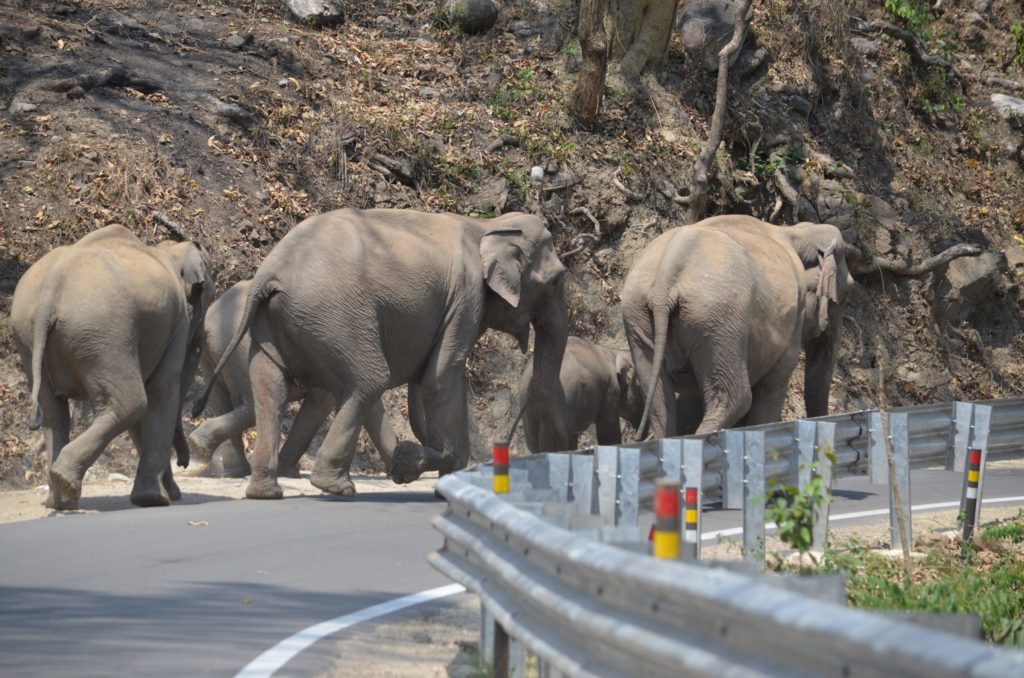It is estimated that fewer than 52,000 Asian elephants remain in the wild. Currently listed as “endangered” on the IUCN Red List, Asian elephants thrive when they have the freedom to follow their traditional movement routes to access food, water, and mates. However, herds across South and Southeast Asia are declining due to habitat loss and fragmentation, which prevent them from meeting their life cycle needs. In response, the Center is supporting the work of infrastructure ecologists and elephant biologists to help maintain the ability of elephants to move across landscapes.
To address dwindling elephant numbers and growing threats—including infrastructure development and collisions with cars and trains—the 13 range countries (see map, below) where Asian elephants still live met in 2017 and signed the Jakarta Declaration for Asian Elephant Conservation. The declaration includes prioritizing actions to reduce infrastructure development in “Asian elephant conservation landscapes” and increasing communication and collaboration among the countries so elephant movement is considered in planning for all development. As a contribution to the countries’ conservation objectives, the Center’s International Connectivity Program is supporting collaboration of experts through the Asian Elephant Transport Working Group (AsETWG).

As a growing network of 25+ members, the Asian Elephant Transport Working Group provides solutions for avoiding and mitigating the impacts of linear transport infrastructure—especially roads, rails, and canals—on elephants. Formed as a joint collaboration of the IUCN World Commission on Protected Areas Connectivity Conservation Specialist Group (CCSG) and the IUCN Species Survival Commission Asian Elephant Specialist Group (AsESG), the working group is focused on contributing to the improvement of core habitats and movement corridors that are threatened by new development and upgrading of linear infrastructure.
The Asian elephant has disappeared from approximately 95% of its historical range
To inform a more comprehensive understanding of the issues and solutions, the AsETWG will release a groundbreaking publication later this year titled “Protecting Asian Elephants from Linear Transport Infrastructure.” Chapters will detail specific impacts and conflicts, discuss emerging technologies, provide general recommendations, and detail seven case studies exemplifying highway or railway measures to protect elephants.
This report, along with the international leadership of the Center and its partners, represents a milestone in new contributions toward efforts to help endangered Asian elephants thrive once more.
Learn more about the Asian Elephant Transport Working Group (AsETWG)
Learn more about the Center’s International Connectivity Program
Photo, top: Asian elephants on highway near Corbett Tiger Reserve, India. Photo courtesy of AG Ansari



